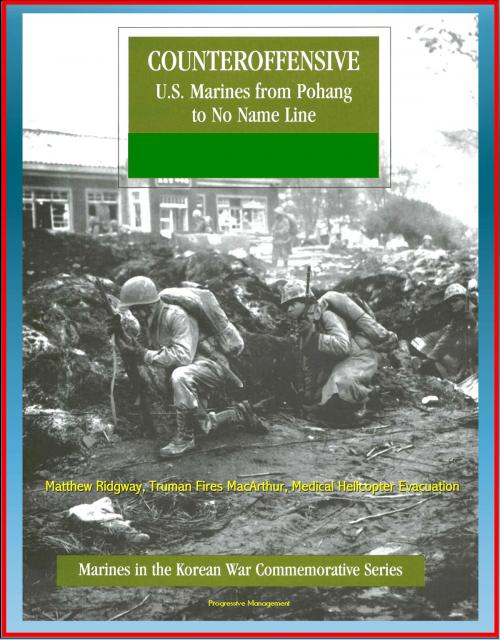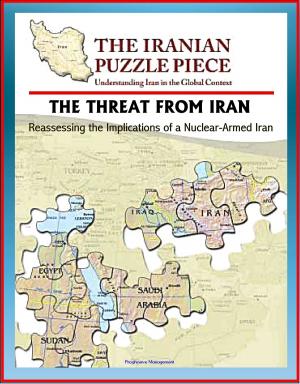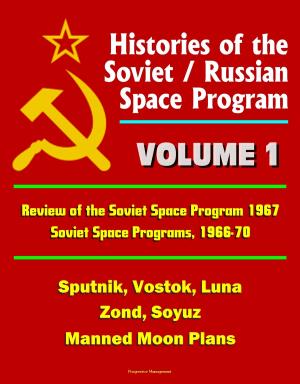Marines in the Korean War Commemorative Series: Counteroffensive - U.S. Marines from Pohang to No Name Line - Matthew Ridgway, Truman Fires MacArthur, Medical Helicopter Evacuation
Nonfiction, History, Asian, Korean War, Military| Author: | Progressive Management | ISBN: | 9781301122431 |
| Publisher: | Progressive Management | Publication: | January 10, 2013 |
| Imprint: | Smashwords Edition | Language: | English |
| Author: | Progressive Management |
| ISBN: | 9781301122431 |
| Publisher: | Progressive Management |
| Publication: | January 10, 2013 |
| Imprint: | Smashwords Edition |
| Language: | English |
This official U.S. Marine Corps history provides unique information about important aspects of the Korean War, with material on the 1st Marine Division, Lt. General Matthew Bunker Ridgway, Truman fires MacArthur, medical helicopter evacuation, and the 1st Marine Aircraft Wing 1951. Here is an excerpt:
At Hungnam, the 1st Marine Division, following the withdrawal from the Chosin Reservoir, embarked all of its equipment and personnel in record time and sailed for Pusan. The trip south for the half-starved, half-frozen Marines was uneventful except for the never-closed chow lines, salt-water showers, a complete change of clothes, and a widespread outbreak of colds or mild cases of pneumonia. "For the first time in weeks we felt clean," wrote one Marine, "and our lice were gone forever—washed down a drain-hole into the cold Sea of Japan." In addition to a scrub down and new dungarees, there was a good deal of conjecture and discussion on the possible employment of the division; many hoped that instead of landing at Pusan, the convoy would proceed directly to Japan or the United States and relief by the 2d Marine Division. Both officers and enlisted men alike held that it was impossible to visualize the employment of the division in the near future and that rest, reorganization, and rehabilitation was an absolute necessity. Then, too, there were those who had fought around the Pusan Perimeter and were "not too happy or not too eager to see the dreadful country they had fought over." Regardless of the speculation, the convoy steamed on, and on 16 December arrived at Pusan. Although several tank landing ships sailed past Pusan and put in at Masan, a majority of the division's Marines traveled by rail and road from Pusan 40 miles west to their new area outside the small seaport untouched by war.
In an area previously occupied by the 1st Provisional Marine Brigade, a tent city quickly sprang up—pyramidal tents for all members of the command and squad tents for each battalion. Hospital tents and mess halls were erected and with the help of Korean laborers mess tables and other improvements soon began to appear. A large barracks in the outskirts of Masan served as the administrative headquarters for the regiments, while the division's service and support units occupied areas near the docks and south of town. The men observed the division's first Christmas in Korea with a memorable display of holiday spirit despite a chilling drizzle. A choir from the 5th Marines serenaded the division headquarters with carols, many attended a series of shows put on by troupes of U.S. Army and Korean entertainers, and the U.S. Navy sent Christmas trees and decorations. It was not only a time to be thankful, but also a period of rapid recuperation from fatigue and nervous tension.
This official U.S. Marine Corps history provides unique information about important aspects of the Korean War, with material on the 1st Marine Division, Lt. General Matthew Bunker Ridgway, Truman fires MacArthur, medical helicopter evacuation, and the 1st Marine Aircraft Wing 1951. Here is an excerpt:
At Hungnam, the 1st Marine Division, following the withdrawal from the Chosin Reservoir, embarked all of its equipment and personnel in record time and sailed for Pusan. The trip south for the half-starved, half-frozen Marines was uneventful except for the never-closed chow lines, salt-water showers, a complete change of clothes, and a widespread outbreak of colds or mild cases of pneumonia. "For the first time in weeks we felt clean," wrote one Marine, "and our lice were gone forever—washed down a drain-hole into the cold Sea of Japan." In addition to a scrub down and new dungarees, there was a good deal of conjecture and discussion on the possible employment of the division; many hoped that instead of landing at Pusan, the convoy would proceed directly to Japan or the United States and relief by the 2d Marine Division. Both officers and enlisted men alike held that it was impossible to visualize the employment of the division in the near future and that rest, reorganization, and rehabilitation was an absolute necessity. Then, too, there were those who had fought around the Pusan Perimeter and were "not too happy or not too eager to see the dreadful country they had fought over." Regardless of the speculation, the convoy steamed on, and on 16 December arrived at Pusan. Although several tank landing ships sailed past Pusan and put in at Masan, a majority of the division's Marines traveled by rail and road from Pusan 40 miles west to their new area outside the small seaport untouched by war.
In an area previously occupied by the 1st Provisional Marine Brigade, a tent city quickly sprang up—pyramidal tents for all members of the command and squad tents for each battalion. Hospital tents and mess halls were erected and with the help of Korean laborers mess tables and other improvements soon began to appear. A large barracks in the outskirts of Masan served as the administrative headquarters for the regiments, while the division's service and support units occupied areas near the docks and south of town. The men observed the division's first Christmas in Korea with a memorable display of holiday spirit despite a chilling drizzle. A choir from the 5th Marines serenaded the division headquarters with carols, many attended a series of shows put on by troupes of U.S. Army and Korean entertainers, and the U.S. Navy sent Christmas trees and decorations. It was not only a time to be thankful, but also a period of rapid recuperation from fatigue and nervous tension.















